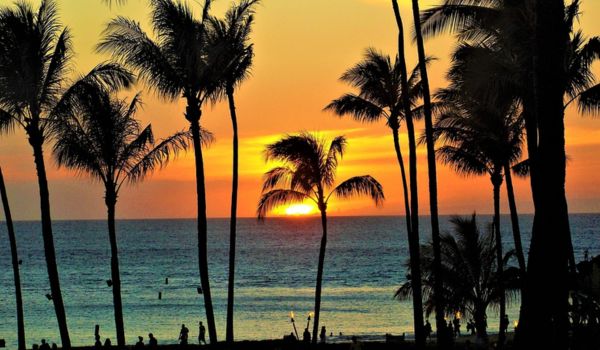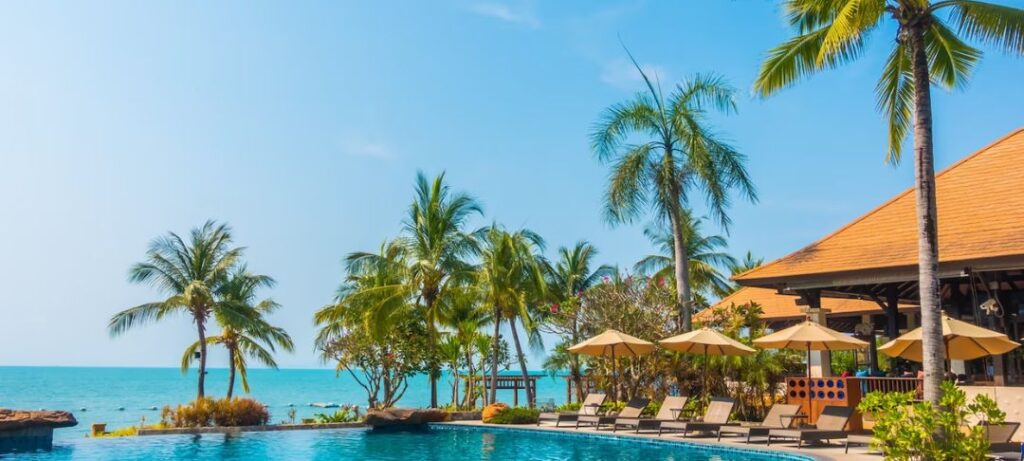Are you dreaming of crystal-clear waters, pristine beaches, and warm sunshine? Look no further than the beautiful state of Hawaii. With its unique culture, breathtaking landscapes, and endless activities, Hawaii has something for every traveler. However, planning a trip to Hawaii can be overwhelming, especially for first-time visitors. That’s why we’ve put together this comprehensive guide on how to book a trip to Hawaii. From when to visit to find the best flights and accommodations, we’ve got you covered. So sit back, relax, and get ready to plan the vacation of a lifetime.
When to Visit Hawaii
Hawaii is a year-round destination, but the best time to visit depends on what you’re looking for in a vacation. The peak tourist season in Hawaii is from mid-December to mid-April when the weather is warm and dry. However, this is also the busiest and most expensive time to visit. If you’re looking to avoid the crowds and save some money, consider traveling during the low season, which is from mid-April to mid-June and from September to mid-December. During this time, the weather is still pleasant, and you can take advantage of fewer crowds and lower prices. Keep in mind that Hawaii’s climate varies depending on the island, so research the weather conditions of your specific destination before booking your trip.
Choosing Your Destination in Hawaii
Hawaii consists of eight main islands, each with its own unique characteristics and attractions. Oahu is the most populous island and is home to the famous Waikiki Beach and Pearl Harbor. Maui is known for its stunning beaches, world-class resorts, and the Road to Hana. Kauai, also known as Garden Island, is known for its lush rainforests and natural beauty. The Big Island, or Hawaii Island, is the largest and most diverse island, with everything from snow-capped mountains to black sand beaches. Lanai and Molokai are smaller, more secluded islands with fewer tourists and a more laid-back vibe. To choose the best island for your trip, consider what you’re looking for in a vacation. Do you want to relax on the beach, hike through lush forests, or explore volcanic landscapes? Research the islands and their attractions to find the perfect fit for your interests, budget, and travel style.
Finding Flights to Hawaii
Finding flights to Hawaii can be tricky, but with some research and flexibility, you can find the best deals. When searching for flights, consider both direct and connecting flights, as connecting flights can sometimes be cheaper. Use flight comparison websites and sign up for email alerts from airlines to find promotions and discounts. Also, consider flying to smaller airports or alternate destinations to save money. Keep in mind that prices for flights to Hawaii can vary depending on the time of year, so try to book your flight during the low season if possible. Finally, be flexible with your travel dates and try to book your flight well in advance to secure the best deal.
Booking Accommodation in Hawaii

Choosing the right accommodation in Hawaii can make or break your trip. There are plenty of options to suit every budget and travel style, from luxury resorts to budget-friendly hostels. When booking your accommodation, consider what’s important to you, such as location, amenities, and price. If you’re looking to be in the heart of the action, Waikiki Beach in Oahu is a popular choice, with plenty of hotels, restaurants, and nightlife. If you’re looking for a quieter, more secluded getaway, consider renting a beachfront cottage on the North Shore of Kauai. Another popular option is to rent a vacation home, which can be more cost effective for larger groups or families. Whatever your preference, be sure to book well in advance, especially during peak tourist season, as accommodations can fill up quickly.
Planning Activities and Excursions
Hawaii offers endless activities and excursions, from snorkeling with sea turtles to hiking through lush rainforests. Before your trip, research the top attractions and activities in your destination and plan accordingly. Many tours and excursions require reservations, so be sure to book in advance to secure your spot. Some popular activities include surfing lessons in Waikiki, a helicopter tour of the Na Pali Coast in Kauai, and a visit to the Volcanoes National Park on the Big Island. Keep in mind that some activities are weather-dependent, so be flexible with your schedule if needed. Also, consider your budget and choose activities that fit within your means. Don’t forget to leave some downtime in your itinerary to relax on the beach or explore on your own.
Renting a Car in Hawaii
Renting a car in Hawaii is a great way to explore the islands at your own pace and on your own schedule. While public transportation is available on some islands, it can be limited, and having a car gives you more freedom to explore off-the-beaten-path attractions. When renting a car, be sure to book in advance to secure the best deal, and compare prices between different rental companies. Keep in mind that rental cars can be expensive in Hawaii, especially during peak tourist season, so look for promotions and discounts if possible. Also, consider the size and type of car you need, as smaller cars may be more affordable but may not be suitable for larger groups or families. Finally, be aware of the traffic laws and parking regulations in Hawaii, as they can differ from those on the mainland.
Packing for Your Trip to Hawaii
Packing for a trip to Hawaii requires some careful consideration, as the climate can vary depending on your destination and time of year. For most travelers, a mix of casual beachwear, comfortable walking shoes, and light layers will suffice. Don’t forget to pack sunscreen, a hat, and sunglasses to protect yourself from the strong sun, and insect repellent for outdoor activities. If you plan to do some water sports or beach activities, bring a swimsuit, beach towels, and water shoes. If you’re planning to hike or explore the outdoors, bring a lightweight backpack, water bottle, and comfortable hiking shoes. Finally, remember to pack any necessary medications, as well as a copy of your travel documents and travel insurance.
Understanding Hawaii’s Culture and Etiquette
Hawaii’s unique culture is a blend of Native Hawaiian, Asian, and Western influences, and it’s important to understand and respect local customs and etiquette during your visit. One important aspect of Hawaiian culture is the concept of aloha, which means love, compassion, and kindness. You may hear this word often during your trip, and it’s a reminder to treat others with respect and kindness. When interacting with locals, it’s important to show respect for their culture and traditions, such as removing your shoes before entering someone’s home and not touching or taking anything from sacred sites. Also, be mindful of your behavior in public, as Hawaii has a more conservative culture compared to some mainland areas. Finally, learn a few basic phrases in Hawaiian, such as “mahalo” (thank you) and “aloha” (hello/goodbye), to show your appreciation for the local culture.
Staying Safe and Healthy in Hawaii
While Hawaii is generally a safe destination for travelers, it’s important to take precautions to stay safe and healthy during your visit. One of the biggest risks in Hawaii is the ocean, which can have strong currents and undertows, so always swim in designated areas and heed any warning signs. Also, be aware of the potential for sunburn and heat exhaustion, especially during the hottest parts of the day. Drink plenty of water and seek shade when needed. In terms of crime, Hawaii has a relatively low crime rate, but it’s still important to take basic safety precautions, such as locking your car and hotel room, and not leaving valuables unattended. Finally, be mindful of the potential for natural disasters, such as hurricanes and volcanic activity, and stay informed of any potential risks during your stay.
Budgeting for Your Trip to Hawaii
Hawaii can be an expensive destination, but with some careful planning and budgeting, you can enjoy all the islands have to offer without breaking the bank. One way to save money is to plan your trip during the low season, which runs from mid-April to mid-June and from September to mid-December when prices for accommodation and activities can be lower. Another way to save money is to book in advance, as prices for flights and accommodation can be higher the closer you get to your travel dates. Look for deals on travel packages that include flights, accommodation, and activities, and consider staying in vacation rentals or camping grounds instead of hotels to save on costs. Finally, be mindful of your spending while on the islands, as prices for food and souvenirs can be higher than on the mainland. Consider cooking your own meals or eating at local food trucks and markets to save on dining costs
Conclusion
Now that you know the ins and outs of booking a trip to Hawaii, it’s time to start planning your dream vacation. Whether you’re looking for relaxation, adventure, or a little bit of both, Hawaii has it all. Remember to consider the best time to visit, choose your destination wisely, and find the best flights and accommodations for your budget. With a little bit of planning, you can have the trip of a lifetime in this tropical paradise. Mahalo for reading!
